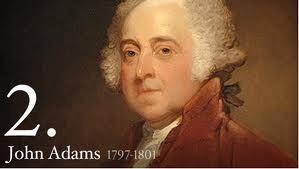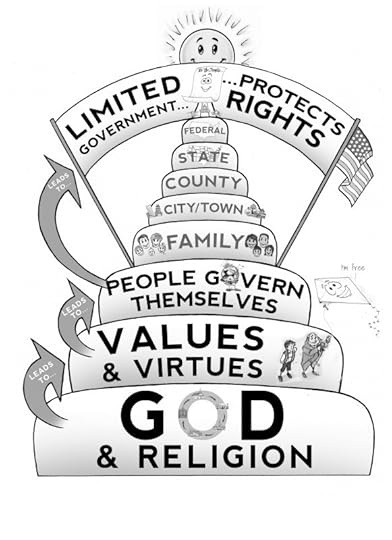David Bowman's Blog
February 24, 2013
Jesus Christ our Advocate

Advocate
“And if any man sin, we have an advocate with the Father, Jesus Christ the Righteous.” — 1st John 2:1
Here, Jesus isn’t just praying to the Father; He’s praying to the Father for us. He is ever making intercession in our behalf (Hebrews 7:25). I picture Christ pleading with the Father that our sins will be forgiven not according to our own merits, but according to our faith in Him and His grace and sacrifice. Its personal. Your own name and situation might very well be on His lips as the Savior begs for mercy for your sake. With Christ championing our cause, how can we fail?
I’m always humbled to hear back from you.
To prove it and show my love, for the month of February, everyone who leaves a comment I will put your name in a hat. If you comment and link back to my blog on your blog, you get your name in the hat twice. If you leave a comment, and link back to my blog, and mention any of my art work in your blog…you get your name in the hat THREE times. What do you win?
I will pick a winner once a month and you can pick any 8×10 print from my Expressions of Christ series.

David Bowman
February 22, 2013
Why does our form of government only work when the people are religious and have strong morals?
John Adams once made this profound statement:

Image from whitehouse.gov
“Our Constitution was made only for a moral and religious people. It is wholly inadequate to the government of any other.” 1
Why?
Why does our form of government only work when the people are religious and have strong morals?
Can’t we all just live however we want? “It’s a free country” after all (as we all stated so eloquently in our elementary school days upon being reprimanded by a parent for some miscreant behavior). What does my personal character and behavior have anything to do with functionality of our Constitutional government?
I like to think of it this way:
Imagine the United States of America as a giant pyramid. We’ll start at the bottom and work up:
1) When our nation was founded, GOD & RELIGION were its foundation. Judeo/Christian principles prevailed as the backbone of our nation…socially and even politically. This belief in God permeated every aspect of society. And with the First Amendment protecting the freedom of religion, American religious sentiment thrived.
2) This God centered society naturally led to an American people who had strong VALUES & VIRTUES. They were honest and descent. They were industrious. They worked hard and took responsibility for themselves. They were also generous in helping those less fortunate, thus following the “Golden Rule.”
3) Therefore, because Americans prided themselves in these values, the PEOPLE GOVERNED THEMSELVES. They were not looking to government or anyone else for a hand-out. There was no sense of “entitlement.” They took care of themselves and their own in a spirit of self-sufficiency, independence, and compassion. Societal controls were at a minimum because the people knew how to control themselves.
4) So, what was the government’s role in their lives? Simple. They established a LIMITED GOVERNMENT TO PROTECT THEIR RIGHTS. That’s it. That was its sole purpose. Government played a small role, relatively speaking. It wasn’t involved in every aspect of their lives. It wasn’t in the business of “redistributing wealth” in order to “take care” of everyone. Government wasn’t the bloated, oppressive, unsustainable, multi-tentacled monstrosity that it is today. It was the proverbial “cherry on top”, instituted for the purpose of protecting our God given rights.
Thomas Jefferson explained the role of government best when he stated:
“[A] wise and frugal Government, which shall restrain men from injuring one another, which shall leave them otherwise free to regulate their own pursuits of industry and improvement, and shall not take from the mouth of labor the bread it has earned. This is the sum of good government…” 2
Viola! A nation that is stable and sound.
Illustration of a Stable nation from What Would the Founding Father’s Think book by David Bowman
A little too simplistic? Perhaps.
But the principle is this:
Because our Constitution is entirely built around the concepts of liberty and self-government, we as Americans need to know how to responsibly handle liberty and self-government if we are to survive as a Republic. And how do we responsibly handle liberty and self-government? Be “a moral & religious people”…and the rest falls into place.
I love hearing from you!
To prove it and show my love, for the month February, everyone who leaves a comment I will put your name in a hat. If you comment and link back to my blog on your blog, you get your name in the hat twice. If you leave a comment, and link back to my blog, and mention my book What Would the Founding Father’s Think in your blog…you get your name in the hat THREE times. What do you win?
I will pick a winner once a month and you can pick one copy in eBook or Print.

David Bowman
1 – The Works of John Adams, ed. Charles Francis Adams (Boston: Little, Brown and Company, 1850-56), 9:228-9
2 – First Inaugural Address, 1801
John Adams once made this profound statement:
“Our Constitution was made only for a moral and religious people. It is wholly inadequate to the government of any other.” 1
Why?
Why does our form of government only work when the people are religious and have strong morals?
Can’t we all just live however we want? “It’s a free country” after all (as we all stated so eloquently in our elementary school days upon being reprimanded by a parent for some miscreant behavior). What does my personal character and behavior have anything to do with functionality of our Constitutional government?
I like to think of it this way:
Imagine the United States of America as a giant pyramid. We’ll start at the bottom and work up:
1) When our nation was founded, GOD & RELIGION were its foundation. Judeo/Christian principles prevailed as the backbone of our nation…socially and even politically. This belief in God permeated every aspect of society. And with the First Amendment protecting the freedom of religion, American religious sentiment thrived.
2) This God centered society naturally led to an American people who had strong VALUES & VIRTUES. They were honest and descent. They were industrious. They worked hard and took responsibility for themselves. They were also generous in helping those less fortunate, thus following the “Golden Rule.”
3) Therefore, because Americans prided themselves in these values, the PEOPLE GOVERNED THEMSELVES. They were not looking to government or anyone else for a hand-out. There was no sense of “entitlement.” They took care of themselves and their own in a spirit of self-sufficiency, independence, and compassion. Societal controls were at a minimum because the people knew how to control themselves.
4) So, what was the government’s role in their lives? Simple. They established a LIMITED GOVERNMENT TO PROTECT THEIR RIGHTS. That’s it. That was its sole purpose. Government played a small role, relatively speaking. It wasn’t involved in every aspect of their lives. It wasn’t in the business of “redistributing wealth” in order to “take care” of everyone. Government wasn’t the bloated, oppressive, unsustainable, multi-tentacled monstrosity that it is today. It was the proverbial “cherry on top”, instituted for the purpose of protecting our God given rights.
Thomas Jefferson explained the role of government best when he stated:
“[A] wise and frugal Government, which shall restrain men from injuring one another, which shall leave them otherwise free to regulate their own pursuits of industry and improvement, and shall not take from the mouth of labor the bread it has earned. This is the sum of good government…” 2
Viola! A nation that is stable and sound.
[image error]
A little too simplistic? Perhaps.
But the principle is this:
Because our Constitution is entirely built around the concepts of liberty and self-government, we as Americans need to know how to responsibly handle liberty and self-government if we are to survive as a Republic. And how do we responsibly handle liberty and self-government? Be “a moral & religious people”…and the rest falls into place.
1 – The Works of John Adams, ed. Charles Francis Adams (Boston: Little, Brown and Company, 1850-56), 9:228-9
2 – First Inaugural Address, 1801
February 17, 2013
Adoration
The expression between Jesus and the little girl (who happens to be one of the model’s daughters in real life) says it all in this piece—“I adore you.” The closer one draws towards the Savior, the more he or she adores everything about Him. Thus, I can only imagine the overflowing joy and love we will feel when we are actually in His presence, in His embrace. The feelings of adoration will be so intense and amazingly, I don’t think they will be one-sided. I picture Christ peering so deeply into our hearts, with His perfect love, that His adoration for us will be just as intense.
Have you ever felt adoration in your life between you and Jesus Christ? Have you come close? Please share your experiences and thoughts below.
I’m always humbled to hear back from you.
To prove it and show my love, for the month of February, everyone who leaves a comment I will put your name in a hat. If you comment and link back to my blog on your blog, you get your name in the hat twice. If you leave a comment, and link back to my blog, and mention any of my art work in your blog…you get your name in the hat THREE times. What do you win?
I will pick a winner once a month and you can pick any 8×10 print from my Expressions of Christ series.

David Bowman
February 15, 2013
A RECTANGLE, IS A RECTANGLE, IS A RECTANGLE, Mr. President
After hearing President Obama’s SOTU (State of the Union) address last night, I am reminded of a lesson I gave when I taught high school:
I drew four shapes on the whiteboard. A circle, a square, a triangle, and a rectangle. I then covered up the shapes by sliding the front white board over them.




At the beginning of class, I asked one of my students to go to the office and get something for me. As soon as he left (we’ll call this student Steve), I slid back the front white board to reveal the four hidden shapes. “Okay, guys,” I said, “We’re going to try a little experiment later in the class. If I call on you, I need you to call this last shape an oval… not a rectangle. Got it?” A little perplexed, they all agreed. I covered up the shapes again and Steve returned from the office.
Halfway through class, I uncovered the shapes and announced we that were going to have a little pop quiz—“NAME THE SHAPES!” (Oooh, difficult. I know). I called on a Senior football player to go first. He correctly named all the shapes, calling the rectangle an oval (per my request). I then invited a popular, senior cheerleader girl to do the same, which she did. A few kids later, guess who I called on?
“Steve! Why don’t you give it a try?” I smiled. Can I just say? I had no idea the pressure I was putting on Steve. You would have thought I just asked him to swim in a pool of piranha. He was terrified. But after some persuasion, he agreed to have a go at it.
“Circle. Square. Triangle.” And then a long pause… followed by a tiny, barely audible,
“Oval.”
The point: What would make a high school kid, who has known from age two that that shape was a rectangle, go against all logic and reason, and call it an oval? Had that rectangle ceased to be a rectangle because a cute, blond cheerleader called it an oval? Is reality altered simply because certain people refuse to recognize it as so? Does truth bow to the whims of popular opinion? I think you get the point.
On a national stage, can a government continue to ignore its debt, pretending that if it just doesn’t recognize it for what it is (a pending crisis of catastrophic proportions), it will magically go away? Does reality cease to be reality all because a handsome, articulate individual (who happens to be POTUS) proposes to defy logic and history by spending/taxing our way back to prosperity? How can politicians believe we can just keep going the way we are, not taking the National debt seriously enough to take drastic steps towards its reduction, and still come out on top?

National Debt graphic from What Would the Founding Father’s Thing by David Bowman
To me, President Obama’s address felt like a continued denial of reality. Deficit Reduction through reduced government spending IS the paramount issue of our day! Period. It is the devastating rectangle of reality for us. Everything else is secondary. It is no longer just “Well, it would be nice to reduce that pesky deficit, but government can’t possibly cut this program or do without that entitlement.” When will we have a majority of elected officials (including a president) who truly (in ACTION, not just in word) put that as their number one priority?
Are we really going to continue to “spend our way to prosperity” (uh huh… right, Mr. President), just to turn around and pass that crippling burden of debt on to our kids? That is, if its weight hasn’t already crushed us.
Shame on us.
Oval, Oval, Oval, Oval, Oval, Oval, Oval…
RECTANGLE!
What do you think?
I love hearing from you!
To prove it and show my love, for the month February, everyone who leaves a comment I will put your name in a hat. If you comment and link back to my blog on your blog, you get your name in the hat twice. If you leave a comment, and link back to my blog, and mention my book What Would the Founding Father’s Think in your blog…you get your name in the hat THREE times. What do you win?
I will pick a winner once a month and you can pick one copy in eBook or Print.

David Bowman
Connect with David via Social Media
August 27, 2012
Message to Christian Booksellers | August 2012
“Expressions of Christ” Fine Art Series
By David Bowman
Artist David Bowman creates depictions of the Savior in a variety of expressions.
October 13, 2009
Deseret News | October 13, 2009
 Source: Deseret News, 10/13/2009
Source: Deseret News, 10/13/2009
A few months ago, Deseret Book invited me (amongst many) to attend an author/artist appreciation dinner in Salt Lake City. I had the honor to meet some of the most talented artists and authors within the LDS community and listen to the wise counsel of Elder David A. Bednar. It was a true highlight of 2009 and an evening I shall never forget. One of the people I met was David Bowman, an LDS artist and author. Today’s article is my interview with this wonderfully talented brother.
Q: David, tell us how you got started.
A: Ever since I can remember, I have loved to draw. All through my childhood and teen-age years drawing was one of my favorite things to do in my free time. I think most young kids feel that way about drawing, but then they reach an age where other interests take precedence — and the art falls by the wayside. I guess I never reached that age.
Q: Where did you receive your training and education?
A: I went to BYU and received a bachelor’s degree in illustration. It was the first place I felt like I actually learned how to further my abilities as an artist. Everything up to that point was pretty much self-taught.After graduation, I actually went on to be a full-time seminary teacher for several years. Having worked with the youth as an EFY counselor and in other youth-oriented settings during my college years, I realized that I had two passions: creating art and teaching — especially young people.About four years ago, there came a point in my seminary teaching where I decided to take a break from the classroom and devote myself full-time to my art. But as I think about my motivation to do art, I’ve realized I am (still) a teacher first and an artist second. I love to teach and I use my art as a medium to enhance my teaching. I don’t really create art just for art’s sake, but rather to assist me in teaching something of value to another person.
Q: I love the fact that teaching is so important to you and has influenced your writing and art. So how did the “Who’s Your Hero” series come about?
A: Well, the “Who’s Your Hero: Book of Mormon Stories Applied to Children” came about from me visiting several LDS bookstores and noticing a lack of children’s scripture stories that actually applied the scriptures to the kids (rather than just telling a story). I decided to try to write and illustrate my own books. That was about four years ago. I feel extremely fortunate that Deseret Book liked my concept and offered to publish them. My background in teaching seminary was invaluable in helping me write these books. They are very much a “seminary teacher-ish” approach to teaching the scriptures to kids.For example, Nephi’s story is called “Nephi Never Complains.” I tell the story of Nephi, focusing on his positive “OK!” attitude whenever he was asked to do something hard. And then, at the end of the story, is a “How Can YOU be like Nephi” section where it shows Nephi in modern day settings with kids put in similar situations — like being asked to clean a disastrous looking room — and both Nephi and the kids give the “OK!” thumbs-up that they’ll do it anyway. It helps children recognize that they are being a modern-day Nephi when they obey without arguing or complaining. I love to get e-mails from parents who report that they’re kids are now shouting “OK, Mom!” with their thumbs up when they are asked to do something. To see how the books are working in the home? It’s very rewarding to me.The “Who’s Your Hero” series currently has four books out, each book having three Book of Mormon heroes, respectively, and a special Book of Mormon Christmas book titled “Beyond Bethlehem.” The final book, “Who’s Your Greatest Hero: Jesus Visits the Nephites,” is due out this Christmas.Although I’ve finished my Book of Mormon series, there are certainly more books to come, like a Plan of Happiness children’s book, a Bible series, etc.
Q: David, I know that besides your books, you’re branching out to more artistic endeavors. Tell us more about where you going.
 A: In the past two years, I have also branched out into the world of Christ-centered fine art, creating my company Bowman Art. Again, I love to teach through my art. Often it’s simply an emotion I’m trying to convey, a feeling that Christ generates in our hearts. To further demonstrate that, I give my finished pieces one-word titles — such as “Security” or “Innocence” — to show that that is the main emotion being conveyed. I also have descriptions of each piece, written on the back, to help me teach. I focus entirely on the expressions of Christ and the people in the piece, often leaving out detailed backgrounds and other elements that I feel might distract from that expression. People love to see people. That’s what we’re drawn towards — no pun intended.At other times, I try to teach a concept that is more complicated that just an emotion. My most recent piece, “Come,” demonstrates that. I’m fascinated by the story of Peter walking on water. Artists often depict him at the moment where he’s sinking and Christ is reaching down to “save” him. I’m thinking, “The man walked on water — if even for a short time! He did the impossible.” Lets give him some credit and get him while he was up! Because I wanted to capture the expressions of both Christ AND Peter at that amazing moment, I decided to turn it into a montage with the scene of him walking on the water to Christ in the middle, but with close-ups of their expressions on each side: Christ encouraging Peter, hand outstretched, smiling at the faith of his disciple and friend and (on the other side) Peter determined, full of trust, his eyes completely focused on the Savior.Then I take it a step further to teach what I feel this story is teaching each one of us. It’s not just a story about Peter, it’s our story. I drew it so that we see ourselves as Peter and Christ is reaching out to us. In each of our lives, we have times when we are asked to “do the impossible,” so to speak. Bear a burden, weather a trial, overcome an addiction, wage our personal wars. Christ reminds us that ALL things are possible when we keep our eyes and our hearts focused on him and simply obey his one-word invitation … come.
A: In the past two years, I have also branched out into the world of Christ-centered fine art, creating my company Bowman Art. Again, I love to teach through my art. Often it’s simply an emotion I’m trying to convey, a feeling that Christ generates in our hearts. To further demonstrate that, I give my finished pieces one-word titles — such as “Security” or “Innocence” — to show that that is the main emotion being conveyed. I also have descriptions of each piece, written on the back, to help me teach. I focus entirely on the expressions of Christ and the people in the piece, often leaving out detailed backgrounds and other elements that I feel might distract from that expression. People love to see people. That’s what we’re drawn towards — no pun intended.At other times, I try to teach a concept that is more complicated that just an emotion. My most recent piece, “Come,” demonstrates that. I’m fascinated by the story of Peter walking on water. Artists often depict him at the moment where he’s sinking and Christ is reaching down to “save” him. I’m thinking, “The man walked on water — if even for a short time! He did the impossible.” Lets give him some credit and get him while he was up! Because I wanted to capture the expressions of both Christ AND Peter at that amazing moment, I decided to turn it into a montage with the scene of him walking on the water to Christ in the middle, but with close-ups of their expressions on each side: Christ encouraging Peter, hand outstretched, smiling at the faith of his disciple and friend and (on the other side) Peter determined, full of trust, his eyes completely focused on the Savior.Then I take it a step further to teach what I feel this story is teaching each one of us. It’s not just a story about Peter, it’s our story. I drew it so that we see ourselves as Peter and Christ is reaching out to us. In each of our lives, we have times when we are asked to “do the impossible,” so to speak. Bear a burden, weather a trial, overcome an addiction, wage our personal wars. Christ reminds us that ALL things are possible when we keep our eyes and our hearts focused on him and simply obey his one-word invitation … come.
Q: Thank you for explaining the thought and motivation behind it. It helps the audience understand the artist a lot better to see his art from that enhanced perspective. So what do you enjoy illustrating the most?
A: I enjoy doing both the realistic fine art style and the cartoon-ish style equally. As long as I’m able to teach through my art, it doesn’t matter. They are both equally enjoyable and legitimate in my opinion — and you are able to reach different audiences. I don’t classify myself as a fine artist or as a cartoonist — I’m simply a teacher who uses different art mediums to help me teach . Besides, it’s nice to have the variety. If you get weary of doing one style for too long then you just switch to the other for a while.
Q: Any final thoughts you’d like to share with our readers?
A: I feel very blessed to do what I do. I just love trying to use whatever abilities the Lord might have blessed me with to help people draw closer to him. And I love to create! God is a creator, and since we are all his offspring, I think we have it in each of us to be passionate about creating. Creating anything, whether it’s art, music, inventions or, most importantly, creating better people out of ourselves, through our choices, or others, through our talents (is important).















